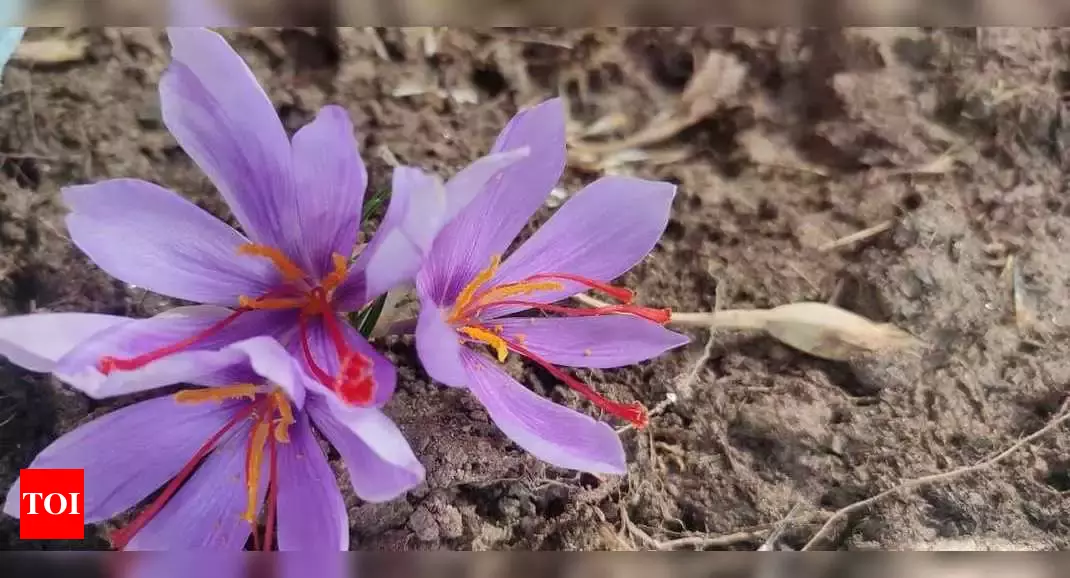





Copyright infringement not intended
Picture Courtesy: timesofindia.indiatimes.com
Context: Challenges faced by saffron farmers in the Khrew area of Pampore, Kashmir, where saffron cultivation has been adversely affected by the presence of cement factories in close proximity. The cement factories release large amounts of dust, containing harmful pollutants, which have a detrimental impact on saffron fields.
Key Highlights
|
Saffron ●Saffron is a spice derived from the dried stigmas of the flower Crocus sativus, also known as saffron crocus. It is one of the most expensive spices in the world, valued for its aroma, colour and medicinal properties. ●Saffron cultivation in India is mainly confined to the state of Jammu and Kashmir, where it has been grown for centuries on the well-drained karewa soils of the Kashmir and Kishtwar regions. ●Saffron is a perennial herb that grows at an elevation of 1500-2000 meters above sea level and requires a cool and humid climate with a photoperiod of 12 hours or less for flowering. ●The saffron flowers are hand-picked in autumn and the stigmas are carefully separated and dried before being used as spice or for other purposes. ●Saffron has multiple uses in the food, cosmetics, pharmaceuticals and perfumery industries. It also has several health benefits such as antioxidant, anti-inflammatory, anti-depressant, anti-cancer and anti-diabetic properties. ●Iran accounts for about 88% of the world's saffron production. Though, India occupies the 2nd largest area but produces approximately 7% of the total world production. |
Conclusion
|
PRACTICE QUESTION Q. Which part of the saffron crocus plant is harvested for its spice? A) Flower petals B) Roots C) Stems D) Stigma Answer: D Explanation: The saffron spice is obtained from the stigma of the saffron crocus flower. Each flower contains three crimson-coloured stigmas, which are carefully handpicked, dried, and used as a saffron spice. |








© 2025 iasgyan. All right reserved